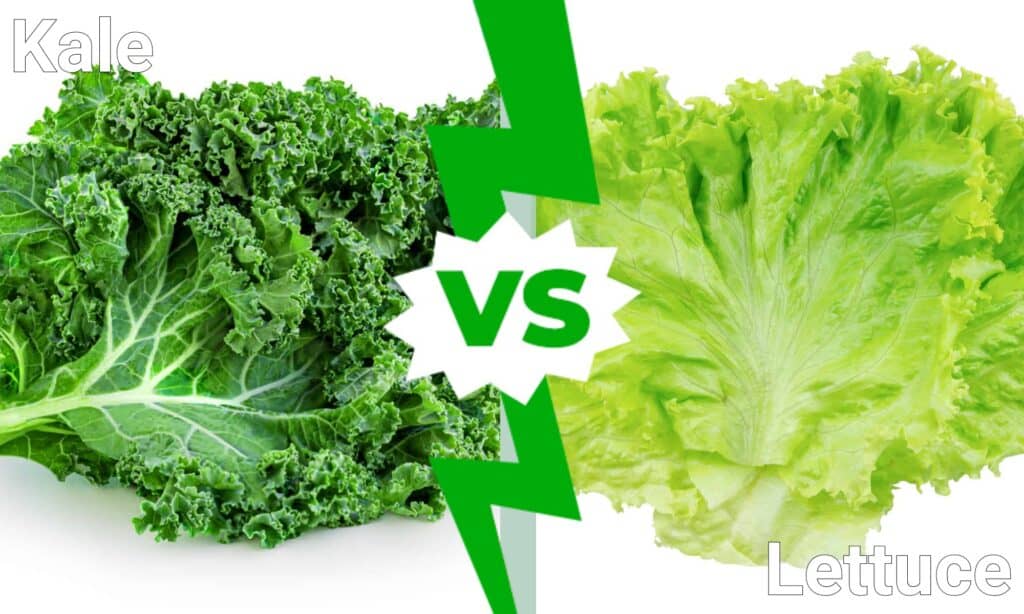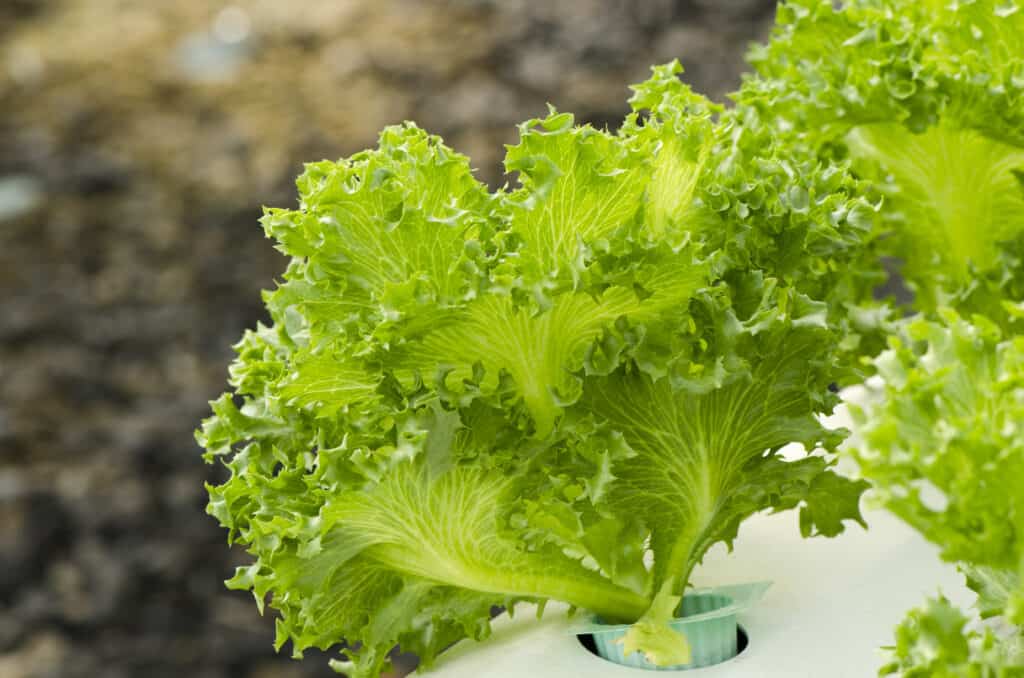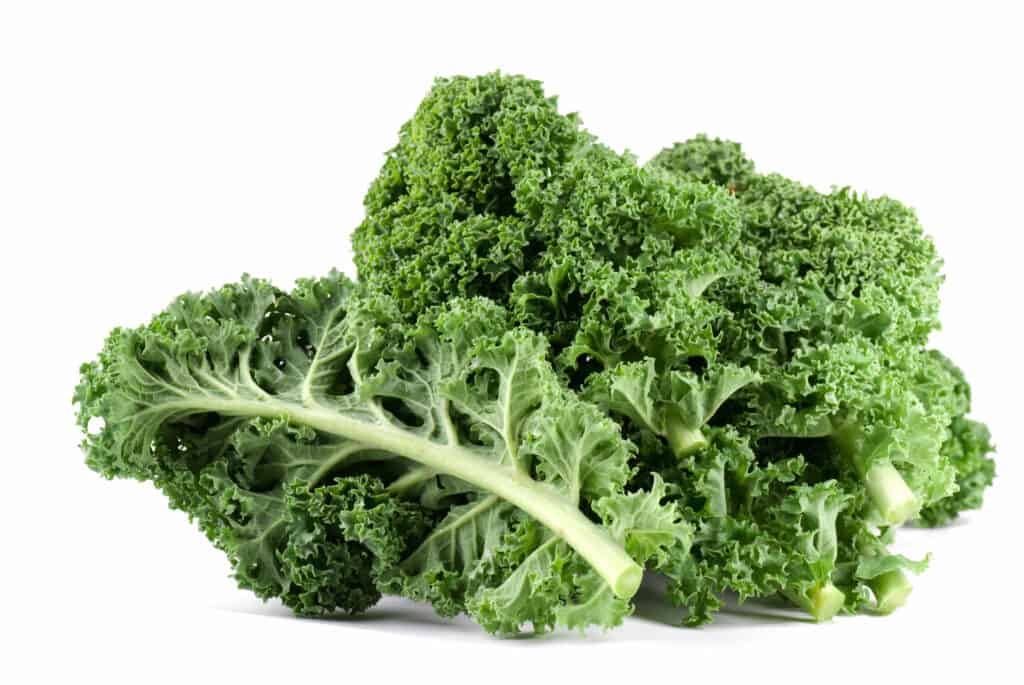Kale and lettuce are foods we all know are good for us, but we don’t always make an effort to eat them. So it’s time to give lettuce and kale the attention it deserves! Both are healthy and versatile vegetables often used as the base in salads and sandwiches.
Kale and lettuce are both healthy and delicious but also very different. When it comes to nutrition, kale wins the day with its high levels of vitamins A and C, as well as calcium, iron, and fiber. It’s also a great source of protein — one cup contains 2 grams!

Comparison Between Kale vs. Lettuce
| Kale | Lettuce | |
|---|---|---|
| Classification | Kingdom: Plantae Clade: Tracheophytes Clade: Angiosperms Clade: Eudicots Clade: Rosids Order: Brassicales Family: Brassicaceae Genus: Brassica Species: B. oleracea Cultivar group: Acephala Group | Kingdom: Plantae Clade: Tracheophytes Clade: Angiosperms Clade: Eudicots Clade: Asterids Order: Asterales Family: Asteraceae Genus: Lactuca Species: L. sativa |
| Description | Rosette of long leaves with no head. Leaves are dark green, red, and purple. Depending on the variant, kale leaves curl on the edges. | Lettuce leaves fold into a head. Domestic variants come in shades of green, purple, and red. |
| Uses | Kale is an edible vegetable that is high in nutritional value. They contain vitamins, minerals, fiber, calcium, and iron. | Lettuce is also a nutritious vegetable low in calories and a good source of vitamins and minerals. |
| Origin | First noted in 2000 BCE in the eastern Mediterranean. | Ancient Egyptians produced lettuce for its oils back. |
| How to Grow | – Plant kale seeds before spring ends – Use well-draining soil that is rich in nitrogen – Plant seeds 1 inch deep and 1-2 feet apart – Kale prefers full sunlight | – Plant lettuce during the fall and spring – Use loose, well-draining soil and compost – Test the pH levels of the soil. It should be 6.0-7.0 – Lettuce prefers full sunlight |
The Key Differences Between Kale vs. Lettuce
The key differences between kale and lettuce include classification, description, uses, origin, and how to grow.
Kale vs. Lettuce: Classification
Kale is part of Brassica oleracea, the same species as Brussels sprouts, cabbage, broccoli, and more. Since they are of the Brassica group, they don’t grow a central head compared to varieties such as capitata, which means with a head.
On the other hand, lettuce (Lactuca sativa) is from the Asteraceae family and falls into four varieties, namely:
- Head lettuce (capitata)
- Romaine lettuce (longifolia)
- Leaf lettuce (crispa)
- Celtuce lettuce (augustana)

There are various colors of lettuce, but you will find the domesticated varieties in multiple shades of green, red, and purple.
©wasanajai/Shutterstock.com
Kale vs. Lettuce: Description
Unlike lettuce, kale doesn’t form a head. Instead, they have a rosette of long leaves. Depending on the variety, you may see the leaves in green, red, or purple shades of color. You might also notice a difference in its texture and taste.
The main stem of kale is around 24 inches or more during the long growing season, with the long, elongated leaves frilling at the margins. Kale is a biennial plant that produces fruits known as silique and yellow flowers.
Each of the four varieties of lettuce is different. For example, the head lettuce has leaves that fold into a head, while the celtuce has a thick stem and narrow leaves. In addition, there are various colors of lettuce, but you will find the domesticated varieties in multiple shades of green, red, and purple.
Kale vs. Lettuce: Uses
Kale is one of those foods that’s so good for you; it almost seems like a miracle food. And even though everyone feels like they know what kale is, there are still lots of myths about its nutritional benefits, how much to eat, and why you should eat it.
Kale and lettuce are healthy and versatile vegetables because they are low in calories and fat and have a refreshing taste. You can use kale and lettuce in various dishes, including salads, wraps, and sandwiches.
If you are looking for a nutritious and delicious vegetable, look no further than these leafy greens! Here are five reasons why we should all be eating more kale and lettuce:
- Low in calories
- Good source of vitamins and minerals
- Good source of fiber
- Hydrating vegetables
- Versatile vegetables with endless possibilities for meals
While they have benefits, they do differ in nutritional value. For example, kale is higher in fiber, three times richer in carbohydrates, and vitamin C. Kale is also rich in vitamin K, making it great for maintaining healthy bones.
So the next time you’re at the grocery store, make sure to pick up some lettuce. Your body will thank you for it!
Kale vs. Lettuce: Origin and How to Grow
Kale got cultivated for food in early 2000 BCE in the eastern Mediterranean and western Asia. In addition, other cabbage varieties date back to the 4th century BC in Greece. The Romans referred to these varieties as Sabellian kale.
How to Grow Kale
Growing kale is pretty straightforward. Plant kale seeds half an inch deep in compost and nitrogen-rich well-draining soil about one to two feet apart. The best time to plant kale seeds is a few weeks before spring ends, and harvest your new leafy greens in the summer.
Lettuce is a hardy annual plant and is not just grown for consumption but for religious and medicinal purposes. The ancient Egyptians first produced lettuce for its oil from the seeds as early as 1860 BC. In addition, lettuce was a sacred plant, and you can see images of the plant in wall paintings in tombs made during religious ceremonies to celebrate the reproduction god Min. The lettuce in Egypt appeared to be similar to romaine lettuce, and it soon got shared with the Greeks and Romans.

The best time to plant kale seeds is a few weeks before spring ends, and harvest your new leafy greens in the summer.
©iStock.com/Ockra
How to Grow Lettuce
Growing lettuce to maturity only takes about 30-60 days! They will thrive at 60-70 degrees Fahrenheit temperatures and does best during fall and spring. Like kale, they prefer full sunlight and loose soil for good drainage. However, remember to test the pH of the soil as they are sensitive to low pH levels.
Kale vs. Lettuce: Special Features
Kale is an exceptional vegetable because it grows so fast and is nutrient-dense. Raw kale has proven to help those with health issues associated with cholesterol or cancer! However, lettuce is highly versatile, and you can pair or add it to almost any meal.
Both kale and lettuce are refreshing vegetables high in nutrients and water. Kale is more nutritious than lettuce, but it’s also tougher to digest. Lettuce is easier to digest but isn’t as nutritious as kale.
When it comes down to it, both are pretty good for you — so eat them up!
The photo featured at the top of this post is © Amverlly/Shutterstock.com
Sources
- Wikipedia, Available here: https://en.wikipedia.org/wiki/Brassica_oleracea
- Wikipedia, Available here: https://en.wikipedia.org/wiki/Lettuce
- Wikipedia, Available here: https://en.wikipedia.org/wiki/Kale
- Britannica, Available here: https://www.britannica.com/science/silique
- SFGATE, Available here: https://healthyeating.sfgate.com/kale-vs-lettuce-1453.html
- Wikipedia, Available here: https://en.wikipedia.org/wiki/Min_(god)
- Healthline, Available here: https://www.healthline.com/nutrition/10-proven-benefits-of-kale
FAQs (Frequently Asked Questions)
Is kale better than lettuce?
Both kale and lettuce are healthy leafy greens, but kale reigns as it has a much higher nutritional content.
Which is the most nutritious lettuce?
The darker the leaves, the more nutritious it is. Romaine is the better lettuce variant.
Is kale a vegetable or fruit?
Kale is a member of the cabbage family, making it a vegetable.
Thank you for reading! Have some feedback for us? Contact the AZ Animals editorial team.






